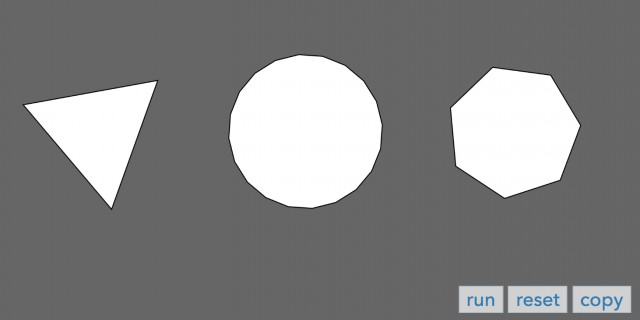I received four anonymous questions from last week's Exit Ticket:
- What applications are there for p5.js outside of art-related work?
- What do the rubrics for our projects look like? This
- Could you explain how to approach this week's homework briefly next class? Dont have to be step-by-step
- Regarding your comment how it will take multiple iterations of "bad work" before we get to "good work", when / how do you know the difference between going forward and seeing potential within the small assignments that we will have in this class, and when we should just throw in the towel? Or is that just a matter of what key skills that one would personally want to take from this course?
#1 is a very relatable question. I agree that it can be hard to imagine how p5.js might have applicability in one's career if all we see are examples of geometric primitives like this:
Dear tweeps: I'm looking for examples of "professional" (i.e. design for clients) work made using @p5xjs. Please reply with examples? (Subtext: students resisting learning p5.js because of a perceived lack of a direct pathway to a jerb.)
— Golan Levin (@golan) August 29, 2019
p5 in the real world:
- https://www.sosolimited.com/work/pixelweaver/ -- Algorithmically generating a one-of-a-kind garment from any internet search term.
- various projects by google creative lab -- https://experiments.withgoogle.com/collection/creatability , https://melodymixer.withgoogle.com/ai/melody-mixer/view/
- https://fathom.info/notebook/18039/ -- some visualization work from @fathominfo
- https://www.ericrosenbaum.com/#/mk1-sampler/ -- a synth app for Makey-Makey.
- http://www.binaura.net/atlas -- Atlås for iOS is made entirely w/ @p5xjs using a single WKWebView for navigation & #libPd for sound:
- sonic pendulum by @yurisuzuki http://yurisuzuki.com/design-studio/sonic-pendulum ... (r&d sketches with p5.js https://www.creativeapplications.net/maxmsp/sonic-pendulum-ai-soundspace-of-tranquility/ ...)
